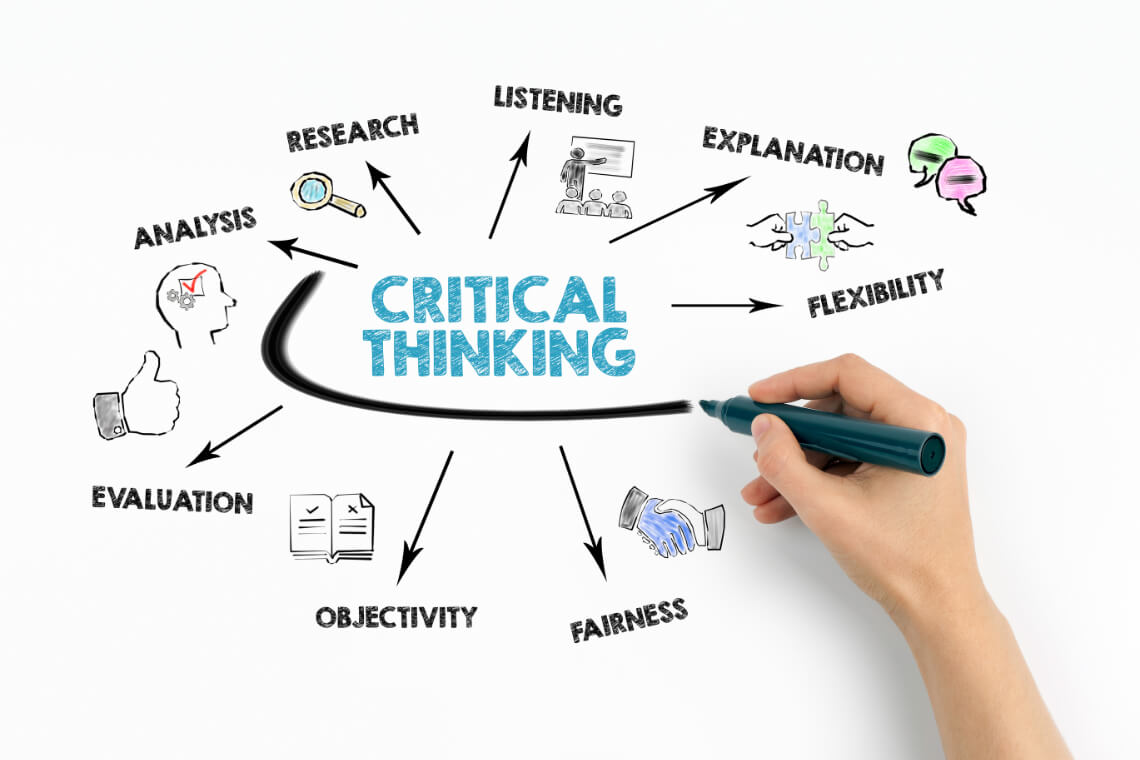The Impact of Technology on Critical Thinking Skills and the Role of Writing in Bridging the Gap
In today’s hyperconnected world, technology has revolutionized the way we live, learn, and work. With a few clicks or taps, we can access a world of information, automate mundane tasks, and communicate across time zones.
While technology undoubtedly makes life easier and more efficient, it also poses significant challenges to the development and maintenance of critical thinking skills.
In this post, we’ll explore how technology influences our cognitive abilities and how writing can serve as a powerful tool to counteract these effects and strengthen critical thinking.
The Double-Edged Sword of Technology
Technology’s impact on critical thinking skills can be both positive and negative, depending on how it is used. Let’s delve into the ways it potentially hampers our cognitive processes:
- Information Overload
- The digital age bombards us with a constant stream of information, from news articles to social media updates. This deluge can lead to superficial understanding, as we skim headlines rather than engage in deep analysis.
- Example: Instead of reading a full research paper, many rely on summaries or quick takes, missing out on nuanced insights.
- Shortened Attention Span
- With the proliferation of instant notifications and bite-sized content, our ability to sustain focus has diminished. Deep thinking, which requires uninterrupted concentration, is often disrupted.
- Example: A study by Microsoft revealed that the average attention span has dropped to eight seconds—shorter than that of a goldfish.
- Confirmatory Bias and Echo Chambers
- Algorithms curate content based on our preferences, reinforcing existing beliefs and limiting exposure to diverse perspectives. This fosters a bubble of confirmatory bias, where critical evaluation of opposing viewpoints is rare.
- Example: Social media platforms like Facebook and Twitter often show users content aligned with their political views, exacerbating polarization.
- Reduced Problem-Solving Opportunities
- Technology often provides quick fixes, discouraging individuals from engaging in complex problem-solving.
- Example: GPS navigation eliminates the need to interpret maps or plan routes, reducing spatial reasoning skills.
- Loss of Research Skills
- With search engines delivering answers instantly, traditional research methods—like sifting through library archives or reading extensive texts—are becoming obsolete.
- Example: Students may rely on Wikipedia summaries instead of consulting primary sources.
The Role of Writing in Enhancing Critical Thinking
Amid these challenges, writing emerges as a timeless tool to cultivate and refine critical thinking skills. Here’s how:
- Clarity of Thought
- Writing demands clear articulation of ideas, which necessitates logical organization and a deeper understanding of the subject matter.
- Example: Drafting an essay on climate change requires breaking down complex data into coherent arguments.
- Analysis and Evaluation
- Writing involves assessing the validity of sources and synthesizing information to build a strong case.
- Example: A research paper on AI ethics might involve evaluating contradictory viewpoints to form a balanced conclusion.
- Problem-Solving
- The writing process itself is a form of problem-solving—choosing the right words, structuring arguments, and refining ideas.
- Example: Crafting a compelling cover letter requires tailoring content to highlight your strengths while addressing the employer’s needs.
- Research Skills
- Effective writing often necessitates thorough research, which hones skills like evaluating credibility, analyzing data, and drawing informed conclusions.
- Example: A dissertation on renewable energy requires cross-referencing multiple studies and data sources.
- Argumentation
- Persuasive writing demands anticipating counterarguments and addressing them convincingly.
- Example: Debating the pros and cons of remote work in an opinion piece requires acknowledging potential drawbacks while advocating your stance.
- Revision and Editing
- Reviewing and refining written work cultivates the ability to identify weaknesses and improve upon them.
- Example: Editing a draft blog post on mental health requires evaluating whether it resonates with the target audience and conveys actionable insights.
- Problem Identification
- Writing often uncovers gaps in knowledge or logical inconsistencies, prompting further inquiry.
- Example: While drafting a business proposal, you might realize that your budget estimates lack supporting data, leading to additional research.
The Rise of AI Writing Tools: Boon or Bane?
AI writing tools like Chat GPT have transformed how we approach writing tasks. With over 100 million users, these tools are becoming ubiquitous. However, their impact on critical thinking is a topic of debate:
Potential Drawbacks:
- Over-Reliance on AI
- If users rely solely on AI for answers, they may neglect the critical evaluation of information, leading to a passive acceptance of outputs.
- Example: Students using AI to complete assignments without questioning the accuracy of the content.
- Reduced Problem-Solving Effort
- AI simplifies complex tasks, potentially discouraging individuals from grappling with challenges independently.
- Example: Automatically generated business reports might hinder one’s ability to interpret and analyze data manually.
- Lack of Creativity
- Dependence on AI may stifle original thought, as users prioritize efficiency over creativity.
- Example: Writers who rely on AI-generated content risk producing generic, uninspired work.
Potential Benefits:
- Enhanced Research Efficiency
- AI tools can expedite information retrieval, allowing users to focus on analysis and synthesis.
- Example: Researchers can use AI to quickly identify relevant studies and data points.
- Learning Aid
- AI can provide explanations, examples, and guidance, serving as a valuable resource for skill development.
- Example: A non-native English speaker might use AI to refine grammar and vocabulary in their essays.
- Augmented Creativity
- When used thoughtfully, AI can inspire new ideas and perspectives.
- Example: A marketing professional might use AI to brainstorm slogans or campaign concepts.
Striking a Balance: Leveraging Technology Wisely
To harness the benefits of technology while mitigating its drawbacks, individuals must adopt a balanced approach:
- Combine Traditional and Digital Research
- Use online tools to gather information but supplement with in-depth reading and analysis from primary sources.
- Cultivate Digital Literacy
- Develop skills to critically evaluate online content, distinguishing credible sources from misinformation.
- Prioritize Deep Work
- Set aside dedicated time for focused, uninterrupted tasks that foster deep thinking.
- Use AI as a Tool, Not a Crutch
- Leverage AI for efficiency but engage in independent thought and analysis to maintain cognitive sharpness.
- Practice Writing Regularly
- Make writing a habit, whether through journaling, blogging, or professional correspondence. This practice sharpens critical thinking and communication skills.
Conclusion
While technology presents challenges to critical thinking, it also offers unprecedented opportunities for learning and skill development.
Writing, as a traditional yet powerful tool, can bridge the gap, fostering clarity, analysis, and creativity.
By balancing the convenience of technological tools with deliberate, independent effort, we can preserve and enhance our critical thinking abilities in the digital age.
For further reading:
- Psychology Today: How to Improve Your Critical Thinking Skills
- Microsoft Attention Spans Research
- Critical Thinking and Generative Artificial Intelligence
- In The Age Of AI, Critical Thinking Is More Needed Than Ever
- How AI Shapes the Future of Critical Thinking
By integrating the best of both worlds, we can ensure that technology serves as an enabler rather than a hindrance to critical thinking and cognitive growth.
The image belongs to “Critical Thinking and Reflection“


